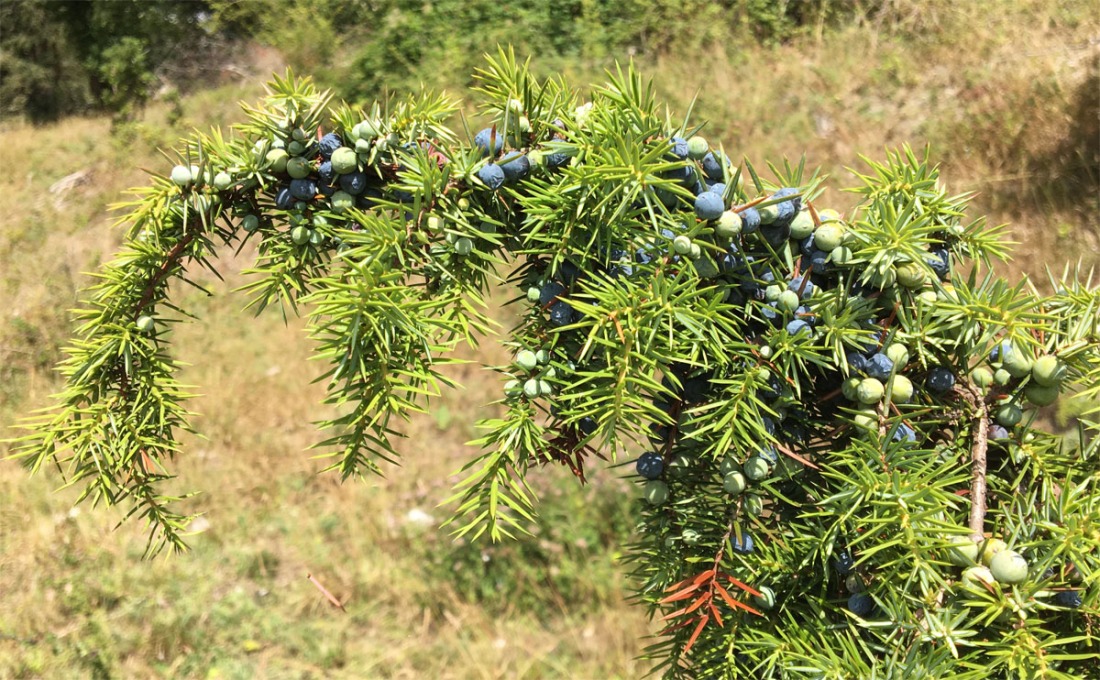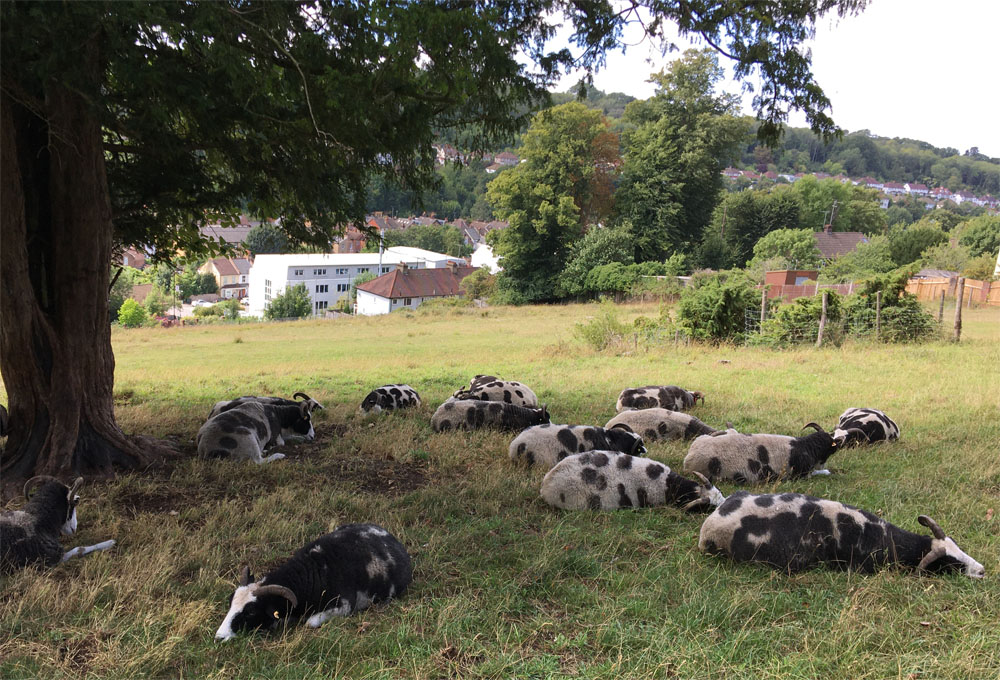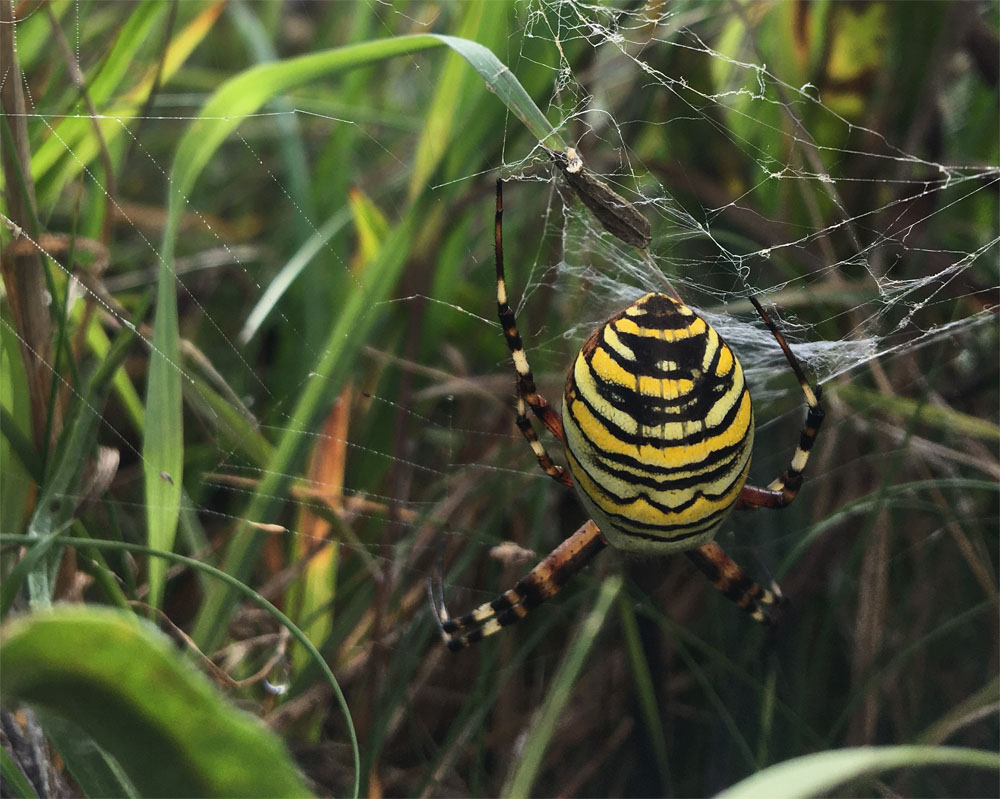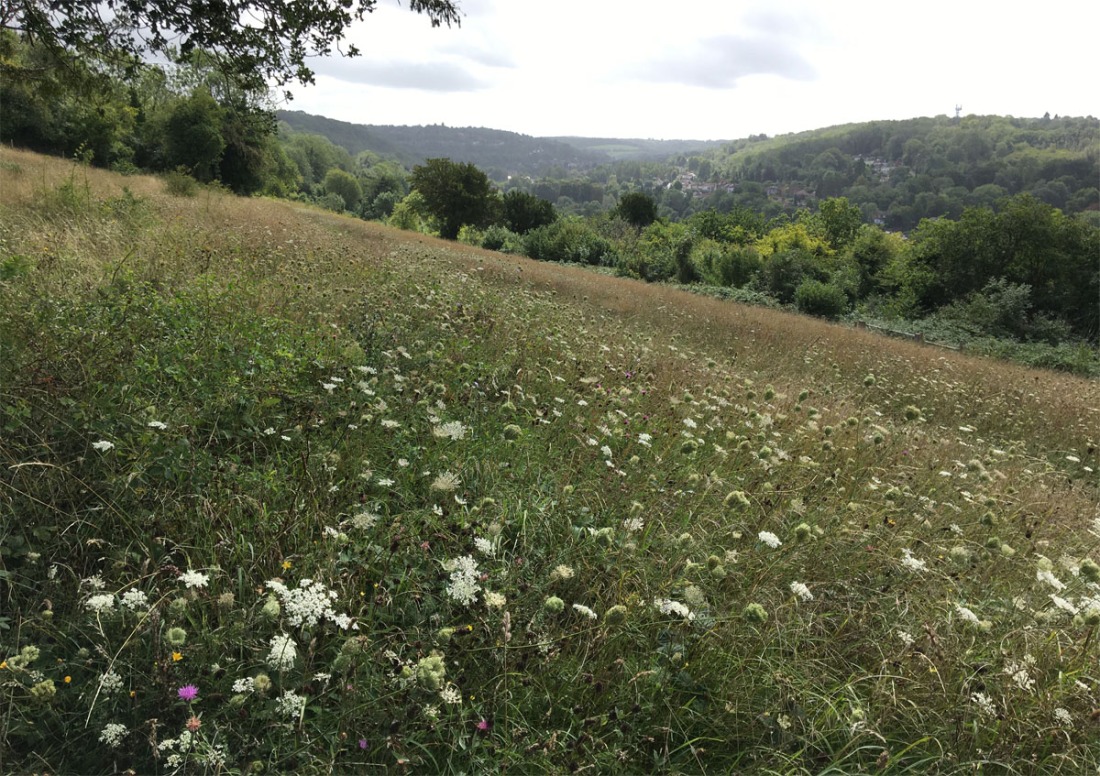Juniper: passport to prehistory. It survived in a Surrey that people have forgotten except when pollen is teased from fossil deposits. Juniper was here when woolly mammoths came trampling, growing alongside plantain and birch, and Arctic foxes sheltered under it. It was one of the first trees to recolonise after the ice sheets thawed, growing slowly, smelling sweetly.
People found it later, and wrapped many stories around its sharp spines.

Is nature a fixed state? Juniper says no. Its range retreated as the ice grew, and expanded as it died. The same is true of red foxes, roe deer and fungi. It is a pattern – a re-weaving of the tapestry – that occurs on scales so grand and slow that we struggle to visualise them.
It is true, of course, that entirely natural change is now vastly overshadowed by the humans in the equation. Juniper is listed as near-threatened, not because a new ice age looms but as a casualty of the farming revolution. Overgrazing by livestock is its bane – or alternatively, not enough grazing, for this child of mammoth-country needs some disturbance by herbivores to protect it against competing plants, and yet cannot survive where that pressure is too high.
In Riddlesdown, ‘Goldilocks’ grazing is provided by Hebridean sheep, a primitive breed from the Scottish north. Conservation groups often use rare breeds to support these kinds of ecosystems.

While we worry about losing some species, certain newcomers have made themselves less than welcome. Grey squirrels, Japanese knotweed and floating pennywort are major threats to our native wildlife, and all were introduced by rash or careless games of humanity.
But that doesn’t mean that all new species are here because of us. Juniper was a pioneer ten thousand years ago, and a few – a very few – species still spread quite naturally. Our meadows know this, for they now host something big and striped!

It’s large, it’s dramatic, it’s harmless – it’s a wasp spider, a dazzling newcomer to the British wild. It was first recorded in 1922 at Rye on the south coast, and has gradually spread northwards. Unlike the noble false widow, which hitched a lift on bananas and has now colonised much of southern England, the wasp spider seems to have floated over the channel entirely on its own threads.
Spiders can exploit airborne currents, but many other species don’t have that option. Fragmenting nature into tiny, isolated reserves hurts the chances of wildlife that should be on the move. Let’s try to keep our wild habitats linked together so they can continue to write their changing stories.

Very interesting and informative post, Adele. And beautiful photos even if I don’t like spiders much. I feel bad that the gray squirrel has made such inroads everywhere. They are moving up our way too, much to the detriment of our sweet little red squirrels (and to the bird population). While I put out sunflower seeds for the red squirrels, I wouldn’t be caught dead feeding a gray squirrel. I’m sure they’re cute too, but they are a detriment to the balance of nature (that’s just my humble opinion). Amazing that juniper has been around that long. I would LOVE to take a walk around our area if we could turn the clock back a few hundred thousand years (as long as I didn’t run into a cannibal or a sabertooth).
LikeLiked by 1 person
Yes, the time traveller needs an invisibility cloak! I’m sure cave lions were spectacular but probably also quite curious…
It is a shame about the squirrels. It’s not their fault that they’ve been released in places so far from their native range but they have caused a catastrophic drop in our native squirrel numbers. There are laws against releasing non-natives now but we still seem to be very bad at biosecurity. We’ve had several serious plant diseases imported by carelessness / accident in the last few years.
LikeLiked by 1 person
Once we started messing the balance of nature there’s no going back to the way it was. All we can do is try to keep the problems from getting worse – kind of like fire fighting with hundreds of hot spots constantly flaring up.
LikeLiked by 1 person
An enjoyable post, Adele. You are probably familiar with Cypress Hills Park in Alberta and Saskatchewan. Red squirrels were introduced there many years ago and are thriving on a sort of protected “island.” Calgary is home to black squirrels which are apparently unusual. The city thinks they are likely the result of escaped or released domesticated squirrels from the 1920s.
I didn’t realise that juniper is that old.
LikeLiked by 1 person
Thanks Lynette. The squirrel that was introduced here is properly called the ‘eastern grey squirrel’ and is native to New England and south eastern Canada. I’ve seen its black colour morph in Toronto; it can be grey, black or whitish in the UK. Our native squirrel is normally reddish, hence its name, but isn’t related to the North American red squirrel. It’s clinging on in northern England but is more common on the continent.
Juniper is old as a species, and sometimes as an individual plant too. It can live for a few centuries in the UK, although one tree from a related species in California is thought to be over 2,500 years old. They’re a special plant that is a reminder of glacial times.
LikeLiked by 1 person
Thanks for the information. I didn’t know that. 🙂
LikeLiked by 1 person
Adele, interesting post! Great images! I’d like to see one of those spiders!
LikeLiked by 1 person
They’re pretty dazzling! And also quite large by local standards, although not about to challenge our biggest species, the rarely-spotted cardinal spider.
LikeLike
Change is life…but when we interfere that isn’t always the case. Nature controls balance …unless we interfere. Extinction can happen naturally and the void is filled naturally…unless we interfere. I wonder if the human race as a whole will ever understand.
Nice Argiope image, Adele. Was enjoying some time with one this morning.
LikeLiked by 1 person
Yes, and our interference is drowning out the background story.
It’s interesting to imagine the ecological outcomes if another ice age did occur one day. No doubt Arctic foxes would return, but the world afterwards would look very different because Britain is – obviously – now an island, which it wasn’t when the Pleistocene ice left us. Back then, our mammals recolonised over a land bridge from France and Holland, but the North Sea has since smashed through it.
LikeLiked by 1 person
Evolution continues, forever changing our planet. Of course, we’re pushing that envelope big time.
Love that wasp spider – a gorgeous thing!
LikeLiked by 1 person
Isn’t it pretty! I would love to paint those stripes.
LikeLiked by 1 person
Just Googled spotted cardinal spider – legs span can be 12cm :O
I like that story about juniper 🙂
LikeLiked by 1 person
Yes indeed! They’re certainly impressive beasts and if Cardinal Wolsey did experience some surprise at meeting them at Hampton Court, perhaps we cannot blame him. I’ve never seen one, or the UK’s two other big spiders (raft spider and cave spider). Might have to go on an arachnid safari.
LikeLike
A really interesting post on the inter-linkages and the ongoing changes – both natural and forced by us. Had not heard of the Hebridean sheep before – love the description of them as Goldilocks grazers – pity there are not more in that category. Invasive plants and animals are an ongoing problem everywhere though its hard not to feel for the animals relocated through no fault of their own and now managing to survive, albeit at the expense of native species.
The last photo is lovely – looks like a real old-fashioned meadow surrounded by proper woodland – the way it was not so long ago!
LikeLiked by 1 person
Yes, invasive species are a global issue and I think many of them are here to stay, unless another ice age eventually arrives to reset the system.
I love old meadows! That one is a Site of Special Scientific Interest so it’s protected by law. Apart from the juniper, it is home to other rare plants like early gentians.
LikeLiked by 1 person
I suppose that the more imminent climate change involving higher temperatures and changing rainfall patterns may result in some exotic plant species surviving better than native species in some regions at least …
It is nice that some old meadows at least have protection.
LikeLike